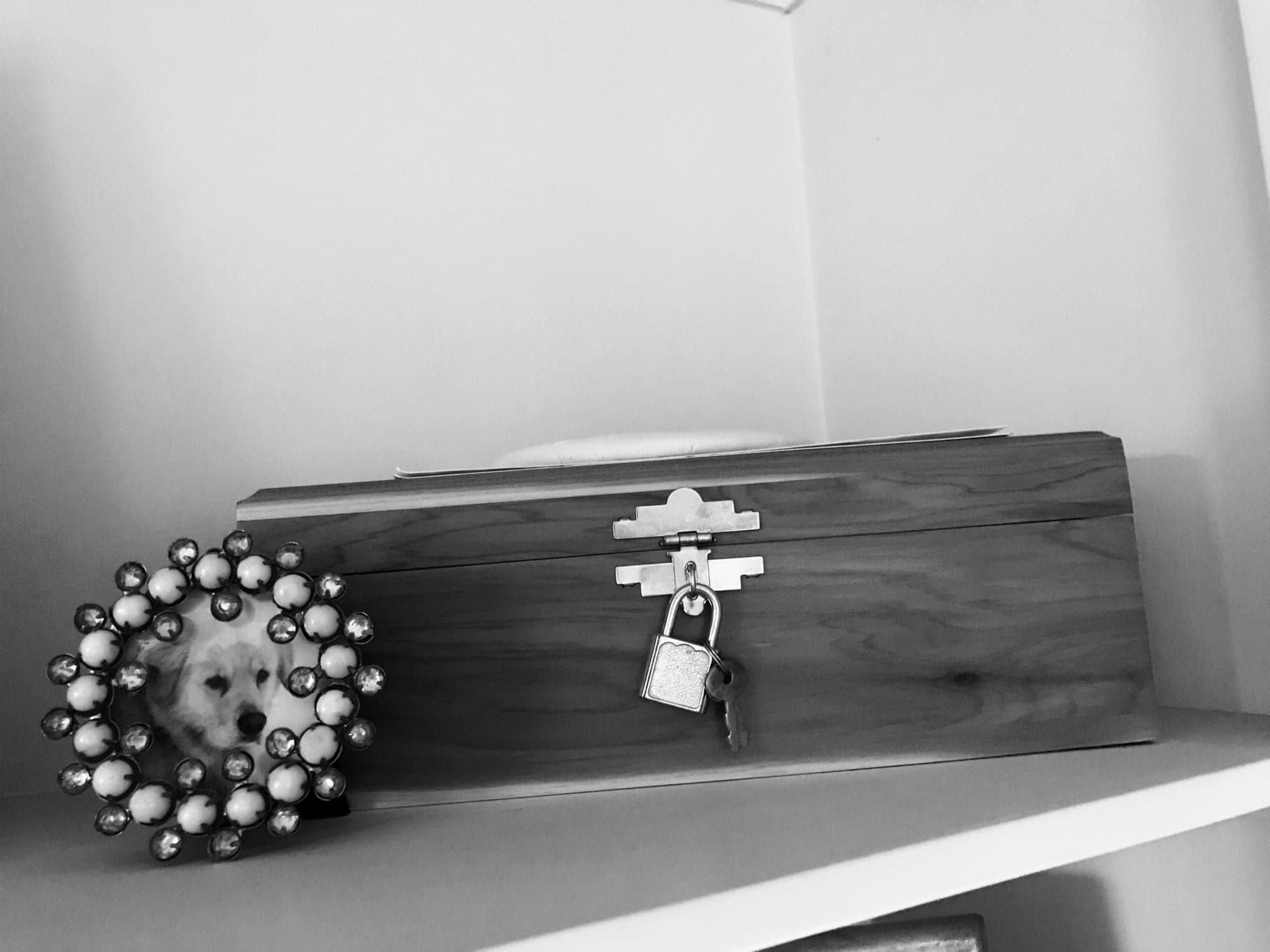Redefining pet loss
Redefining pet loss

A Cornell University veterinary student rolls up the sleeves of her black fleece half-zip embossed with the school’s logo, and shoves her blonde hair into a lazy ponytail. She misses a lock of hair, but there’s no time to fix it. There is a call she has to take. She stretches out her thumb and pinky, and brings her imaginary phone to her ears.
“You’ve reached the Pet Loss Support Hotline. What can I help you with today?” she says. “I’ve been having a really difficult time since my dog Sparky died from lung cancer last week,” says her caller. “I’ve been having trouble getting out of bed. The house is so quiet without him around, so I keep jingling his collar. I feel so guilty about deciding to euthanize him. I just really need someone to talk to.” A nervous smile erupts on the phone operator’s face as she struggles to find something to say. Seconds tick by, and her partner stares blankly at her, his right hand still held to his ear, waiting for a response. “Oh no,” she groans, “I’m going to be so bad at this.”
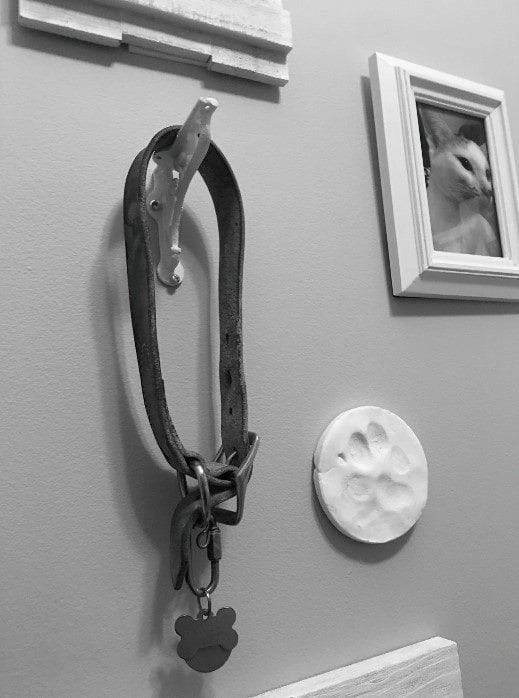
It is seven o’clock on Saturday morning at the Cornell University College of Veterinary Medicine, one of the nation’s top veterinary schools. The rest of the building is deserted, but this classroom, filled with almost 50 students, buzzes with life. Winter coats are strewn over the backs of chairs, and backpacks with zippers threatening to burst, line the aisles. The students sit in pairs with the imaginary phones still held to their ears, and for a moment, it looks like they are playing a game of telephone. This serves as the day’s first exercise. For the next nine hours, these veterinary students will learn empathy skills to help pet owners grieve the loss of a pet. They’ll sit through lectures on listening, bereavement skills, meditation, and the physiology of euthanasia. They’ll learn the ideal vein to hit to euthanize a snake, why skeletal remains and ashes are different, and why the strongest bond is between pet owner and turtle. After today, these students will be certified phone operators for the university’s Pet Loss Support Hotline, a volunteer run initiative that gives grieving pet owners someone to talk to about their loss. Veterinary students operate the hotline on Tuesday and Thursday nights from six to nine, and although they receive university credit for their time, most students like Nycole Cole, one of the officers of the hotline, view it as a different opportunity. “I wanted to understand the human experience of dealing with animal loss,” Cole says. “It’s something that can’t be taught in a classroom, and I know it’s going to be an important skill.”
Given the recent boom in pet ownership, this skill may be more vital than Cole thinks. A survey conducted by the American Pet Products Association (APPA) found that 68 percent of U.S. households own a pet, equating to about 84.6 million homes. But its not just pet ownership that is at an all-time high — it is what we are spending on their organic food, obedience classes, and bedazzled collars. The APPA estimates that by the end of 2017, U.S. consumers will spend $69.36 billion on pets, including things like food, supplies, and veterinary care. That’s a 185 percent increase since 2001. But that outlay of cash represents more than a need to accessorize pets. It also signals a change in how humans value their animals. In fact, household animals have gradually transitioned from pets sleeping in the backyard to full-fledged family members with a place on the holiday card, Halloween costumes, birthday cakes, and even funerals. With a pet’s role becoming more pronounced, the grief that owners feel at their loss can be devastating. The cultural milieu surrounding pet death can make this loss all the more traumatic for an owner who feels that grieving for their pet has no place within societal norms — and they’re not wrong. Historically, our society viewed pets as replaceable animals, and when they died, owners moved on quickly. But with new research on the human connection to animals, those attitudes are changing.

The Human-Animal Bond
Dr. James Morrissey, a senior lecturer at Cornell University, studies the innate psychological factors that fuel our connection to animals. Many theories exist for the origins of this bond including anthropomorphism, our tendency to attribute human traits and emotions onto animals. “This is why people get the idea that their pets know exactly what they’re feeling,” Morrissey says. Then there’s neoteny, which is our love for all things infantile (85 percent of pet owners view their pet as a child), and biophilia, our instinct to connect with nature and attend to animals.
Beyond these theories, there are mental and physical health benefits that come with owning a pet. Pets act as “social lubricants,” making it easier for humans to interact with each other when an animal is present. The responsibility of owning a pet adds structure to a person’s day and gives them a sense of purpose. Even just petting an animal is proven to release endorphins. The Human Animal Bond Research Initiative Foundation (HABRI) found that pet owners have lower blood pressure, reduced anxiety, and increased feelings of well-being. Pets are even going to college. In recent years, colleges have brought in animals during exam periods to calm stressed-out students. While the results are preliminary, a HABRI study predicts a potential $11.7 billion savings to the U.S. healthcare system that can be linked to owning a pet.
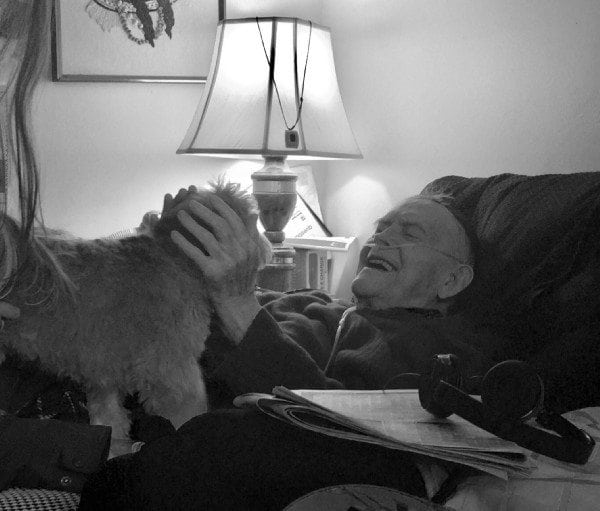
And then there’s the owners themselves. Baby-boomers and Millennials, two generations that make up the majority of the current U.S. population, have a significant influence on the way we perceive the role of pets. Baby-boomers, whose kids are moving out and starting lives of their own, fill their void with pets. A 2017 pet care industry analysis on franchisehelp.com found that pet spending peaks with owners between the ages of 55–64. Millennials, on the other end of the spectrum, are the first generation to grow up thinking of pets more like humans than animals.
“Dudley was the most handsome boy I’ve ever met in my life,” says Elizabeth Robinson, a student at Syracuse University. “He was the only one in my family with brown eyes.” Robinson’s Cocker Spaniel Dudley died from blood vessel cancer just after the end of her freshman year. By the time the family realized why the dog’s belly appeared to be swollen, there wasn’t much they could do. His blood vessels were expanding, and he was bleeding internally. Still, the family put Dudley through surgery to prolong his life. Terminal cancer surgeries can cost anywhere from $2,000 to $5,000. Dudley’s surgery only gave him one more month. “That was still one more month we had together,” says Robinson. “We would have paid any price for that.”
For Dr. Courtney Hale, a veterinarian at Stack Veterinary Hospital in Syracuse, that isn’t surprising. Because of advances in medicine, animals have the potential to live longer. “We have access to much more advanced procedures, medicines and diagnostics than we used to,” Hale says. “But it costs a lot of money, especially when it’s newer.” Still she sees that some owners will spare absolutely no expense when it comes to caring for their pet, even if it means setting up payment plans or borrowing money from friends. But eventually the money and the medicine run out, and when the inevitable arrives, pet owners turn to their veterinarians, who have been there through it all, for guidance.

A Disenfranchised Grief
At Cornell, the veterinary students wrap up lunch. They scarf down plates of catered pasta and cling to lifelines of coffee thermoses. One student voices her desire for a nap. The morning has been long, but the most trying part of the day awaits. Enter Dr. Katherine Goldberg, the veterinarian with a permanent smile behind her eyes. She is here to talk about death. Goldberg founded her practice, Whole Animal Veterinary Geriatrics & Hospice Services in 2010, and since then spends her time trying to bridge the gap between social work and veterinary medicine. She knows that veterinarians teeter on a very fine line with their clients when it comes to their pets. After all, they’re the only profession trained to both preserve and end life. “It’s an extremely sensitive time for pet owners,” Goldberg says. “Euthanasia relieves pain for the animals, but causes pain within the owner.”
Through her own research, Goldberg found that 30 percent of pet owners report grief lasting more than six months following the death of their pet. To help the students understand how severe the impact of losing a pet can be on an owner, she brings in a panel of six of her clients. The youngest is 14 years old. It takes one woman three attempts just to say her dog Henry’s name without crying. While their stories of loss vary, they all share an immense amount of gratitude for Goldberg. “I wouldn’t have been able to get through it without her,” one man says. Goldberg blushes and tries to turn the attention away from herself. One of them tells the story of how Goldberg came to her house at two in the morning, just so her cat could be euthanized in her own home.
This is all part of Goldberg’s ongoing effort to standardize pet-death protocol among veterinary practices, by advocating for a more client-sensitive approach. “The animal is going to be fine, but it’s the people that live on and do this all over again that we have to be concerned about,” says Goldberg. Pet loss traditionally is a disenfranchised type of grief that lacks any set of rituals — the things that help people process and make sense of their loss. Jews sit shiva, Catholics have wakes, and Muslims mourn for 40 days. No matter the culture or religion, the life of the person is celebrated. They are talked about and remembered. Most of the people that call the Pet Loss Support Hotline just look for someone to listen to them. Phone calls at the hotline can last as long as an hour or end abruptly when the caller feels as though he or she has said all they’ve needed. Together, the operator works with the caller to come up with a plan of action to help with the grieving process — something as simple as taking a walk at the same time of day that they used to walk their dog. These practices can offer pet owners the type of closure and validation that help them begin to heal.
An Emerging Industry
It is the beginning of December in Syracuse, N.Y., and Sue Barr, operations manager at Pet Haven Cemetery, has just found fresh tracks in the newly fallen snow. But Barr knows exactly whose they are. “We have one lady who comes every day year round to visit her pets,” says Barr. “She comes and walks through the snow every day to their graves. Her entire life was her pets.”
Established in 1930, Pet Haven is the second oldest pet cemetery in New York. Barr has been working at Pet Haven for 18 years, and during her time at Pet Haven, Barr has watched the amount of cremations a month increase from 84 to over 200. “It has shifted as people have found out that pets are very special, and they’re not just an animal,” says Barr.
And the numbers keep growing. The International Association of Pet Cemeteries and Crematories (IAOPPC), a non-profit organization dedicated to enhancing the standards and ethics of pet cemeteries and crematories, also possesses the industry’s only accreditation program for pet cemeteries. From just their membership alone, the IAOPCC estimates that the pet funeral industry now earns more than $100 million in profit.
Barr kneels down in her faded blue jeans; her gray, bushy hair falls in her face. She picks up a folded pink blanket from the floor belonging to a cat that was buried yesterday. The blanket will go home with the owner today. The cat will not. Barr is also Pet Haven’s certified bereavement counselor, and believes that the funeral process can be cathartic for grieving owners. Owners pick out caskets or urns, and can choose to have a burial with a graveside service. If they want something more personal, Pet Haven also offers private viewing rooms. “We tell people it’s just like burying humans, except our humans have a tail and four legs,” says Barr.
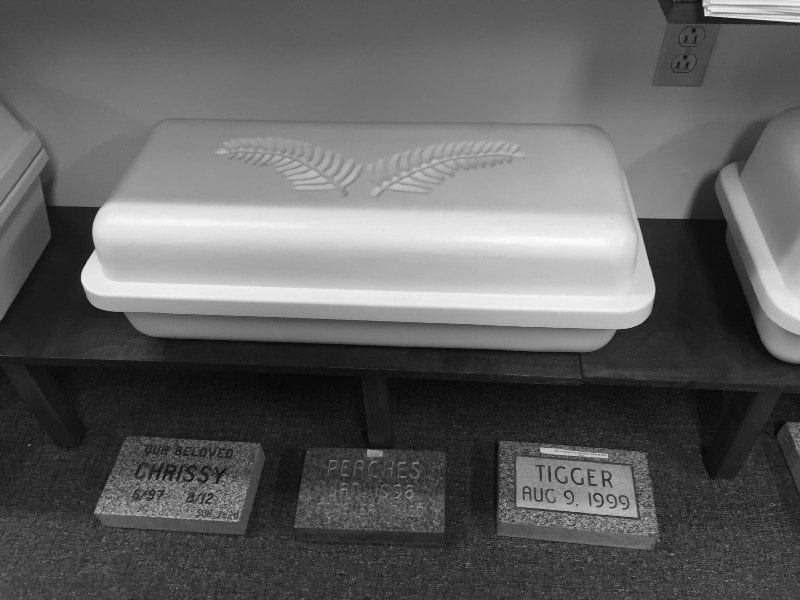
Barr raises show dogs, and is no stranger to pet loss. She estimates that she’s lost close to 50 pets in her lifetime, the youngest being a five-month-old puppy with a heart defect. Still, it is a heartbreak Barr wants to endure. “It’s an emptiness,” Barr says. “I know the pets I had needed my love, and they loved me in return. That’s what helps me through my grief.”
For Don Burke, remembering a pet takes an entirely different form. Burke, the owner of The Glass Shed, a glass-blowing business he operates out of a small shed in his backyard, specializes in creating glass pet mementos with cremated ashes — everything from paperweights to Christmas ornaments. The idea for the business came to him four years ago, when a woman who had just lost her Newfoundland begged Burke to figure out a way to memorialize the dog’s ashes. After three months of perfecting his technique, Burke crafted a black piece of glass with a splash of white ash in the middle, inspired by a photo of the Newfoundland after he was hit in the nose with a snowball. Don says that when most of the customers see their piece, they begin to cry. Then he can’t help himself from crying too.
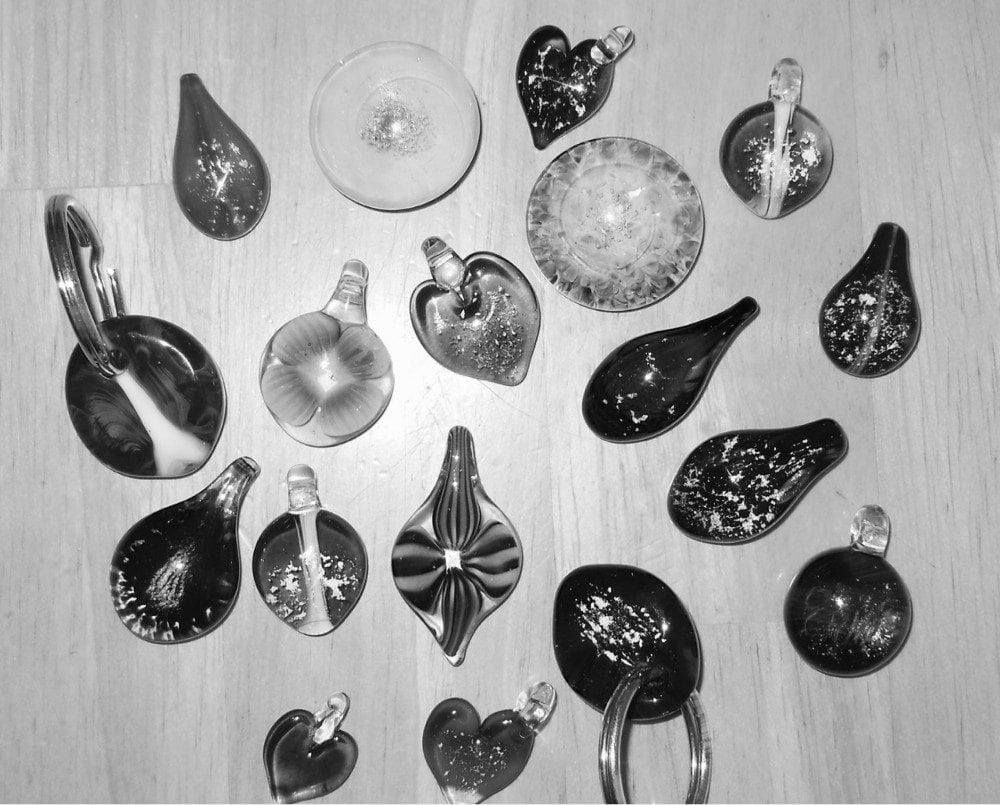
Besides how much his work touches his customers, Burke is most proud of his prices. His most expensive piece, a large pendant, is $45, but typically his work costs $35. If the price were any higher, Burke says he would be taking advantage of people’s grief. “This is kind of a love thing,” says Burke. “I do it because I love the people, not the money.”
Out in the back, Burke heads to his shed. A kaleidoscope of colored glass rods line the shelves, strictly following the order of the rainbow. Burke’s blowtorch is poised to ignite, and small pokers stick out of the kiln. In the farthest corner of the shed, a Jacuzzi is stored for winter. And then there’s the small bag of white ash on the worktable labeled “Charlie.” His owners will be coming in three days to pick up the glass pendant, and Burke wants it to be perfect. He fires up his torch and begins.
